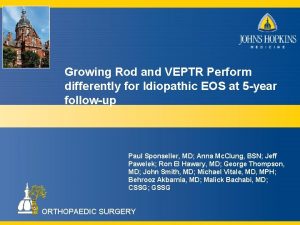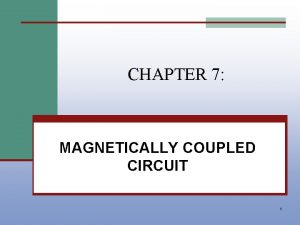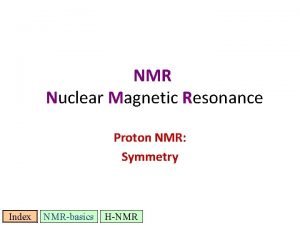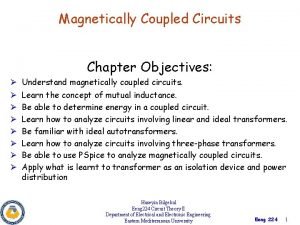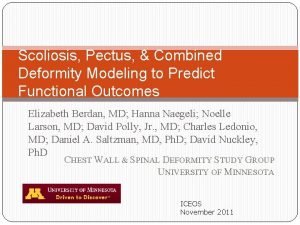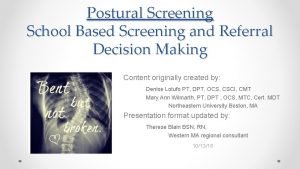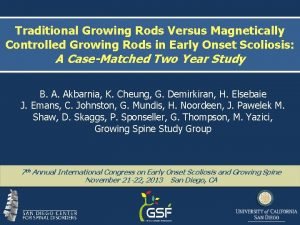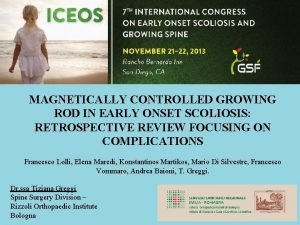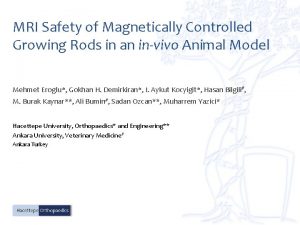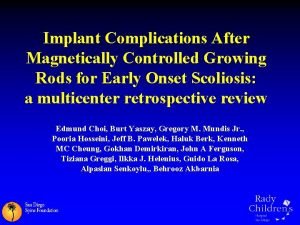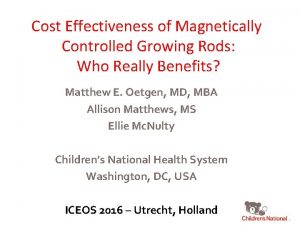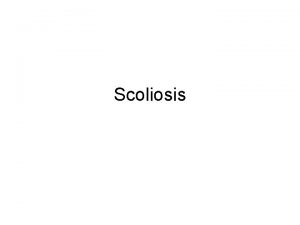Magnetically Controlled Growing Rods in EarlyOnset Scoliosis The







- Slides: 7

Magnetically Controlled Growing Rods in Early-Onset Scoliosis: The Graduates O C Shirley, A Field, A Barrie, J Ferguson Starship Children’s Hospital, Auckland, New Zealand

Aims • To describe the surgical experience and to measure the final correction achieved in ‘the graduates’

Patients and Methods • Cobb angle and height from T 1 -S 1 was measured from pre-operative and 6 week postoperative erect films. • The surgeons were interviewed about their operative experience and a review of the operative notes was performed

Results – Intraoperative Findings • Metalosis - associated with the rod-motor junction(5/5) • Loose screws requiring upsizing (5/5) Metalosis • Broken mechanisms (2/5) A broken mechanism Post simple debridement

Results – Final Correction • The mean coronal cobb angle correction was 17. 7 degrees (-0. 3 -44. 3) • The mean change in height T 1 -S 1 17. 8 mm (2 -56) Change in coronal alignment Change in height

Results – Length of stay and complications • The average length of stay was 8. 8 days (6 -16) • One patient required two washouts due to on-going wound ooze with no positive deep tissue cultures

Conclusions • During definitive fusion surgery following MCGR one can expect to routinely encounter metalosis which can be readily debrided in a contiguous layer. Several of the screws are often loose and must be upsized to provide sufficient strength for the definitive construct. • The additional correction achieved is variable and depends primarily on the extent of the preoperative deformity. • Length of stay is similar to a routine posterior spinal fusion.

